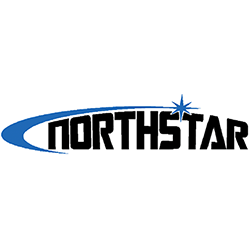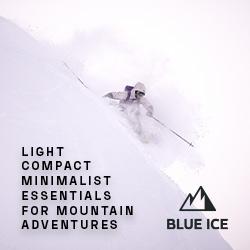Forecast for the Salt Lake Area Mountains

Saturday morning, April 27, 2013
Timing will be everything this weekend - start early and finish early. The avalanche danger is LOW early this morning while the surface snow is still frozen, but the danger will increase to MODERATE as the day and the snow heats up. Get off of and out from under steep slopes as the snow becomes damp, starts to sluff or the crusts become punchy or collapse. Western Uintas: The avalanche danger will increase to CONSIDERABLE with daytime heating, due to the potential for deep slab avalanches releasing near the ground.
 Special Announcements
Special Announcements
Wet avalanche conditions this weekend will be unpredictable, especially in the Uinta Mountains where a more unstable snowpack usually exists. We urge everyone to choose conservative terrain this weekend. Stay off of--and out from underneath--steep slopes in the heat of the afternoon.
We will issue intermittent advisories as conditions warrant for the Salt Lake region only. They will end for the season after this weekend. I will still post observations from you each evening and early morning as well, so if you're getting out, please let everyone in our community know what you find. The rest of our staff is off for the season and most of the ski resorts are closed for the season, so your feedback and observations are important.
 Weather and Snow
Weather and Snow
Under clear skies, temperatures are in the low 30s at most mountain stations, which is about 4 degrees warmer than yesterday at this time. The northwesterly winds are light, less than 10 mph, with the highest peaks having speeds in the 15 to 20 mph range, with gusts to 30 mph. The overnight refreeze of the snow surface will be solid early this morning, but won't last as quite as long as yesterday. There will be good corn snow on most smooth southerly facing slopes, and dry dense powder was still found yesterday on the steeper, high northerly facing slopes.
 Recent Avalanches
Recent Avalanches
Yesterday, collapsing of a 4" thick melt freeze crust was noted on a 9,000' NE facing slope in Snake Creek around 8 am. On another ENE facing slope, a point release (sluff) fanned out to a larger avalanche, large enough to catch and carry a person. Smaller wet points releases were noted on most aspects by end of the day.
Wet Snow
Description
With a steady warming trend for the weekend, I expect a slight increase in wet activity each day. While both natural and human triggered wet loose sluffs will be a daily occurrence, it’s the possibility of the more unpredictable slab avalanches that really makes us nervous. All the April storms created new layers in the snowpack. As these snow layers heat for the first time, on west through north through easterly facing slopes this weekend, these slopes become more suspect for slab avalanches.
If you’re heading into the backcountry today, careful observation of heating and changing snow conditions is important. An early start and early finish to your backcountry day will go a long way toward making it a safe day. Be observant of warning signs of too much heating:
- Natural or human triggered wet sluffs
- Small sluffs fanning out into larger slides, or running long distances
- Punchy or collapsing crusts
- cornices breaking off
These mean it's time to head home, or at least change to an aspect with cooler snow.. Remember, even "smaller" slides can be dangerous and inescapable in steep terrain - they can take you off a cliff or for a long ride.
Note on the danger rose: almost no snow exists on southerly facing slopes below 8,000'.
Also, remember, most of the ski resorts are closed for the season with no avalanche control, so treat it just like backcountry terrain.
Additional Information
High pressure over Utah will bring warm and dry weather through the weekend, with clear skies and light winds. Temperatures will slowly trend upward, a few degrees warmer each day. 8,000' highs today will be in the mid to upper 50s, with 10,000' temperatures reaching near 40. The northwesterly winds will remain light, generally less than 15 mph, with speeds across the high peaks in the 10 to 20 mph range, occasionally gusting to 30. A copy cat day on Sunday, just a bit warmer with increasing clouds in the afternoon. The first of two weak, dry cold waves will bring clouds Sunday night, with a second stronger system on Monday night bringing slightly cooler temperatures.
You can always check the Cottonwood Canyons Forecast, which you can find on the Snow Page.
You can also check your local NWS weather forecast, for example, here is the one for Alta. You can click on any spot in the state for a local forecast. You can also click on the satellite loops, radar loops or the hourly weather graph in the lower right of any forecast.
General Announcements
If you trigger an avalanche in the backcountry - especially if you are adjacent to a ski area – please call the following teams to alert them to the slide and whether anyone is missing or not. Rescue teams can be exposed to significant hazard when responding to avalanches, and do not want to do so when unneeded. Thanks.
Salt Lake and Park City – Alta Central (801-742-2033), Canyons Resort Dispatch (435-615-3322)
Twitter Updates for your mobile phone - DETAILS
Subscribe to the daily avalanche advisory e-mail click HERE.
UDOT canyon closures UDOT at (801) 975-4838
Remember your information can save lives. If you see anything we should know about, please participate in the creation of our own community avalanche advisory by submitting snow and avalanche conditions. You can also call us at 801-524-5304 or 800-662-4140, email by clicking HERE, or include #utavy in your tweet.
Donate to your favorite non-profit –The Friends of the Utah Avalanche Center. The UAC depends on contributions from users like you to support our work.
For a print version of this advisory click HERE.

This advisory is produced by the U.S. Forest Service, which is solely responsible for its content. It describes only general avalanche conditions and local variations always exist. Specific terrain and route finding decisions should always be based on skills learned in a field-based avalanche class.




